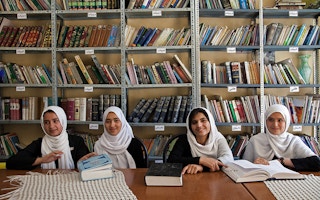If countries ended forced marriage, child labour, female genital mutilation and other practices undermining girls’ health and rights, their economies could be billions of dollars richer for it, a U.N. agency said on Thursday.
Around the world, 16 million girls between the ages of six and 11 never start school, many because they are married off or forced to work to help their families financially, the United Nations Population Fund (UNFPA) said in a report.
It said developing countries could reap a dividend of $21 billion a year if all 10-year-old girls completed secondary education, echoing studies that show a correlation between improved literacy for girls and higher earnings later in life.
“Education is the world’s best investment. Whenever a girl’s potential goes unrealised, we all lose,” Babatunde Osotimehin, executive director of UNFPA, told the Thomson Reuters Foundation in a phone interview.
The report comes a year after world leaders adopted an ambitious set of global goals to end poverty and inequality by 2030. One of the Sustainable Development Goals (SDGs) is targets gender equality and the empowerment of women and girls.
“How we support girls today will determine what our world looks like. The SDGs give world leaders a real opportunity to get things right,” Osotimehin said.
“
Education is the world’s best investment. Whenever a girl’s potential goes unrealised, we all lose.
Babatunde Osotimehin, executive director, United Nations Population Fund
He blamed gender inequality on the “poor awareness of the state of girls’ human rights and a lack of accountability from political leaders worldwide.”
UNFPA said girls were less likely than boys to complete formal schooling at secondary and university level. They were more likely to be in poorer health and would find it harder to get paid jobs.
It said an estimated 47,700 girls are married before the age of 18 every day, and that three in four girl labourers are unpaid.
The report’s recommendations included providing cash transfers to poor families to encourage them to keep their daughters in school longer by helping to meet the costs of education.
It also suggested providing life-skills training and sex education to girls approaching puberty.
This story was published with permission from Thomson Reuters Foundation, the charitable arm of Thomson Reuters, that covers humanitarian news, women’s rights, trafficking, land rights and climate change. Visit news.trust.org

















